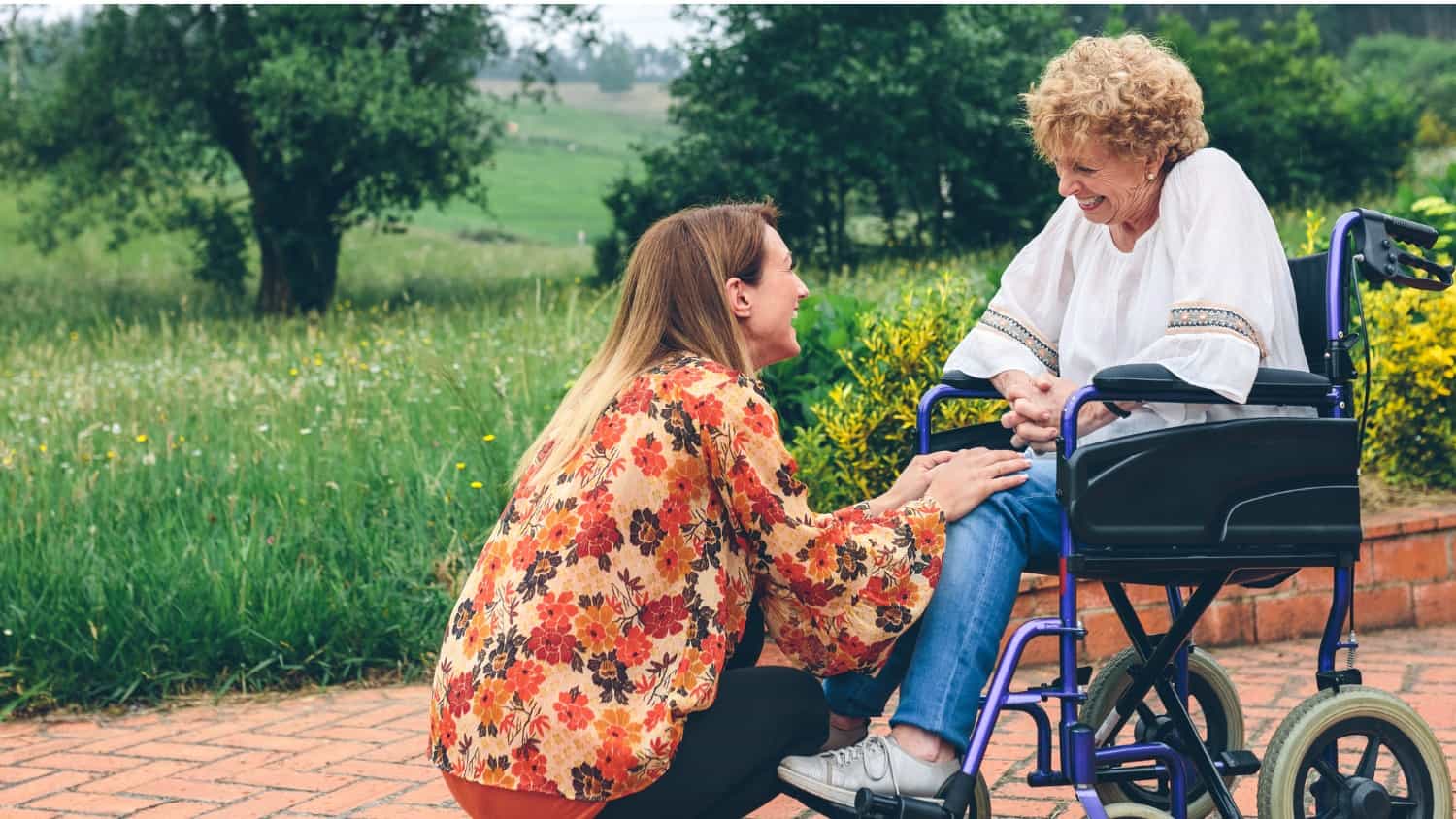
Worldwide, there are over 50 million people living with dementia and receiving support from family and friends. Caregivers of those living with dementia have a tremendous responsibility and opportunity. They work tirelessly to meet the needs of the loved one and adjust to the decline with additional help from family, friends, adult day programs, and professional caregivers.
Sometimes caregivers overlook the capability of their loved one to contribute to their care. With forethought and patience, caregivers can identify tasks that their loved one can do. Maximizing the capability of a loved one with dementia benefits everyone.
What Is the Caregiver’s Role?
Carol Amos, author of H.O.P.E. for the Alzheimer’s Journey, was a caregiver for her mother who lived with dementia for over 11 years. She developed The Caregiving Principle®, a framework for the caregiver’s role. It basically states the caregiver’s role is to fulfill the needs of their loved one which the loved one cannot do for themselves.
Your loved one has needs, and in the early stages of the disease, they will be able to meet most of those needs on their own. However, as the disease progresses and as they age, your loved one will be unable to take care of many of their needs. These unfilled needs become the role of the caregiver or caregivers.
Ms. Amos’ family worked proactively to slow the decline of their mother’s physical ability and cognitive capability and thus to maximize her ability to care for herself.
Working on Physical Decline
They maximized their mother’s physical ability by scheduling doctor appointments for all of her physical illnesses. She also received vaccinations and age appropriate health screenings. The family carefully weighed the risk and benefits of any medical procedure. For instance, they agreed to their mother’s knee replacement and cataract surgeries because they believed the benefit outweighed the time, pain, cost, and risk.
Slowing Cognitive Decline
To help slow the decline of the cognitive capability, Ms. Amos states that it is important to receive a proper diagnosis from a memory or dementia specialist. Specialists will rule out other causes of the symptoms such as vitamin deficiencies, hormone imbalance, medication overload, depression, or even sleep apnea. The doctors will do extensive blood tests, cognitive tests, a brain scan, and other tests.
Caregivers need to prepare for the increase in required care. Initially, Ms. Amos’s mother needed family oversight but then as she began to need more, a social worker, then a social worker and a nurse, then assisted living, and then memory care came into play.
As Ms. Amos interacted with her mother, she focused on three areas to maximize her mother’s cognitive capability. They were:
Maintaining Routine
Establishing a routine provides a sense of comfort and familiarity. Set mealtimes were the foundation of her mother’s routine with activities added between meals. The family tried to maintain this routine when they visited or took her to appointments and outings. Ms. Amos believes her mother found comfort in this routine.
Minimizing Anxiety
Minimizing anxiety reduces stress and helps the loved one focus on the task at hand. Ms. Amos created several techniques to defuse anxiety in her mother. These techniques included “living in the patient’s world,” which is basically not correcting them when their mind takes them to earlier times.
Another technique, redirection, can be accomplished by encouraging them to change their actions or sometimes by simply changing the subject. In every situation, Ms. Amos always tried to set a positive tone, especially when her mother looked like she may say something negative.
Engaging in Stimulating Activities
Stimulating activities may slow the mental decline and help a person reach their full potential. Appropriate puzzles and games such as Bingo, UNO, and Dominoes are mind stimulating and fun. Almost any project or activity can be modified to stimulate the mind.
Caregivers can also identify tasks for their loved one to do such as sorting/folding laundry, cleaning deck furniture, or setting the table. The caregiver may have to provide some support such as labeling kitchen cabinet doors and drawers.
The task may take longer and the result may be slightly different. But does it really matter what side of the plate the fork is on? Caregivers must gauge daily if the task is appropriate with minimum frustration for both and adjust the activities as their loved one declines.
Maximizing Cognitive Capability Is a Win-Win
Maximizing the ability of the loved one benefits the caregivers and the loved one. However, caregivers also need to adjust their expectations as their love one declines. Finding the right balance of pushing the upper limits of a loved one’s capability can vary from day to day.
Finding that balance can reduce the stress and workload for the caregivers. It may slow the progression of the disease. But most importantly, it will increase the self-esteem of the loved one as they contribute to the household and their personal care.
Do you think people suffering from dementia can contribute to their own care? What kinds of tasks would you entrust them with? How would maximizing a dementia patient’s cognitive ability help their family? Please join the conversation!
